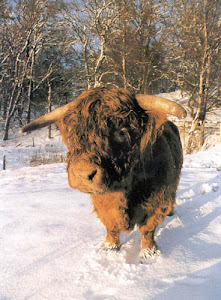Shetland and Scotland. Two distinct geographical and social areas, the former now part of the latter, sharing an intertwined history open to as many interpretations as there are commentators. Feelings run high in Shetland as to where her roots actually lie; the rest of Scotland doesn’t really seem to bother. Feelings run high in Scotland as to where her roots actually lie, but the rest of the UK doesn’t seem to bother. The same could be said even of the relationship between the UK and Europe.
Shetland lies approximately 200 km to the NNE of Scotland at a strangely forgotten crossroads in the North Atlantic, once the Barrandov Bridge of the Vikings. It was here that Harald Hardrada met his death, where countless Viking ships on their way to raid southern shores stocked up on provisions, water, food and women. The islands are pock-marked with the stony remains of lost Viking communities, the remote hills occasionally afford glimpses into an even more distant past, to the time of the Picts, a race of diminutive, sturdy small-time farmers and part-time Christians whose dwellings have all but vanished under the ground, their place names however surviving even today.
It is a land of long low hills, wild peat bogs; a windy place by anyone’s standards, the ground carved up by a distant ice age and eons of erosion into islands of fantastic shapes, the sea visible from every viewpoint, here and there a small straggling village boasting the peculiarly 20th century juxtaposition of old stone cottages and swank, important, larger-than-life homes, betraying the growing prosperity of islanders. The wildlife is spectacular in its variety and abundance, the scenery melancholy and timeless.
Shetland is accessible by ferry from Aberdeen, Scotland or by air from several points from the UK mainland and Scandinavia. The plane takes about an hour and a half from Glasgow and is patronised by local businessmen and politicians being important South and earnest birdwatchers coming North. But to my mind the overnight ferry crossing, magical in summer over glassy calm seas or heart-thumping in winter through ferocious winds, the ship glancing off the waves like a cork, is the only real way to appreciate the other-worldliness of the islands.
To visit Shetland is to take a step off the world, a step from which you never quite recover.
Our village, Baltasound, on the northernmost island of Unst was a 19th century host to the largest herring port in the world, employing up to 3600 seasonal fish-processing workers at the height of the season. Today the population has dwindled to a thin two hundred or so. As if in counterpoint, the port of Sullom Voe on Mainland is today home to the largest oil terminal in Europe, transferring millions of barrels of North Sea and Atlantic oil from pipeline to tanker for onward shipment to all four corners of the Earth. It is to this modern development Shetland owes its present wealth. The future is not so slick however, with oil reserves on the brink of becoming exhausted and associated revenue and investment in decline. The Shetland Isles have a tendency to embrace boom and bust economics with little will or sense to save for harder times ahead.
Most of those who are not employed by oil companies are kept on either by local government or go-ahead local businesses to provide the myriad of services demanded by a visibly proud and financially upmarket society. The islands today are woven together by fish farms and their nets, connected by enormous car ferries ploughing between islands, the pride of their captains, servicing a multitude of small businesses whose representatives travel through the islands in big 4x4s. The other less fortunate inhabitants scrape a living out of sheep farming and fishing, though neither is now really viable.
The issue of roots goes back to the 1400s, when the Shetland Isles became a sort of returnable deposit in a complicated marriage contract between the Royal Houses of Scotland and Denmark in lieu of actual cash that was to have changed hands. The cash never materialised so the debt has never been paid. Some argue that this means we are still under the rule of the Scandinavians; others refute this claiming that it’s all water under the bridge and let’s get on with being part of Britain. I remain to be convinced by either argument.
I have been fortunate to have lived in both Shetland and Scotland for long enough to realise that comparison is awkward and unhelpful. Vast differences in size, population, geography, industry and again roots all get in the way. I grew up in the islands and carry with me special memories of rocky beaches, aromatic marshes and the call of the birds. When I was a mere twelve I was enrolled at a boarding school in Edinburgh, the capital city of Scotland. You can imagine the shock! From windswept isle to roaring smoke-choked city. But at least it was Edinburgh, the Athens of the North, a beautiful majestic city in crumbling gold sandstone, a city which always struck me as having been planted in between the trees of a great forest.
.jpg)

